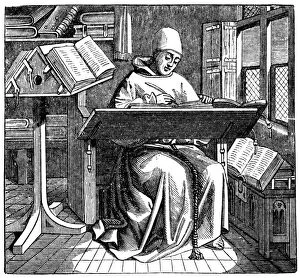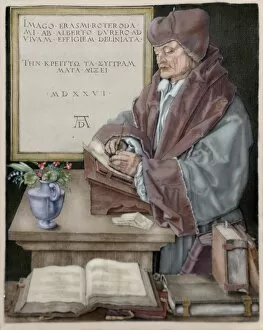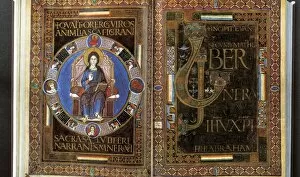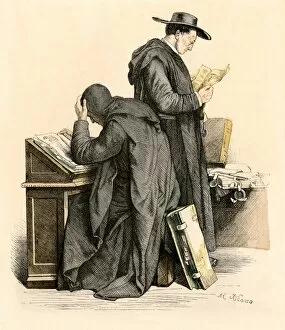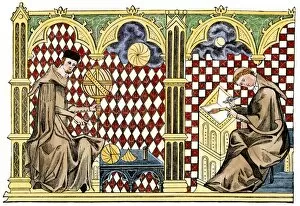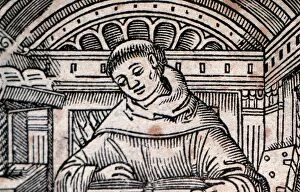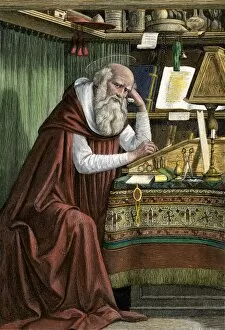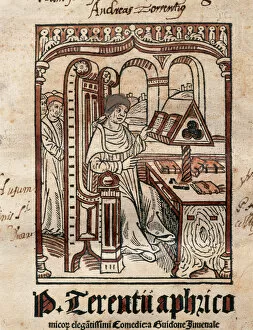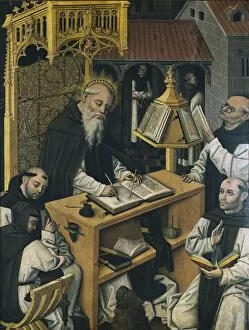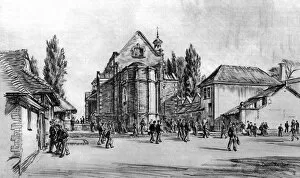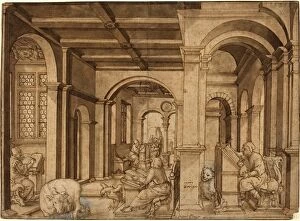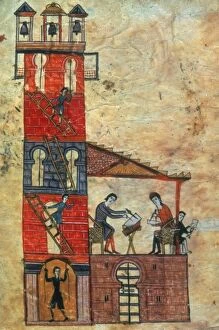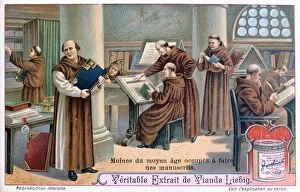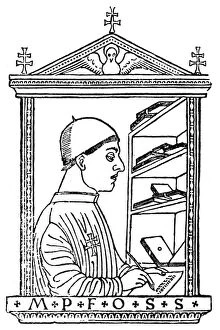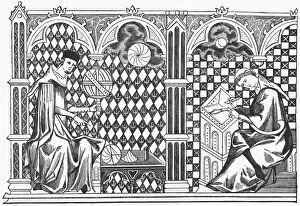Scriptorium Collection (page 2)
In the quiet corners of history, where words were cherished and knowledge revered, the scriptorium stood as a sanctuary for scholars and scribes alike
For sale as Licensed Images
Choose your image, Select your licence and Download the media
In the quiet corners of history, where words were cherished and knowledge revered, the scriptorium stood as a sanctuary for scholars and scribes alike. Within its hallowed walls, tales unfolded like delicate petals unfurling under the watchful eyes of Abelard and Heloise. Monks, their robes swishing softly against the stone floors, diligently copied manuscripts with quill in hand. Each stroke of ink was an act of devotion to preserve wisdom for future generations. The air hummed with whispered prayers as they meticulously crafted illuminated capital letters on sacred pages. The Whitsun sun cast its golden rays upon a manuscript's vellum surface, illuminating an intricate capital letter within the Episcopal Sacramentary of Elna. Its vibrant colors danced across the page like whispers from another time. In Northumbria's early 8th century Codex Amiatinus, Ezra sat cross-legged on his knees, engrossed in writing scripture onto large parchment leaves. His hands moved swiftly yet gracefully across each line as he poured his soul into every word. Saint Jerome found solace amidst towering shelves filled with ancient tomes in his study adorned by Castilian School artists' skilled hands. With furrowed brow and quill poised above parchment, he delved deep into translations that would shape theological discourse for centuries to come. The Lorsch Gospels (Codex Aureus Laurensius) breathed life into biblical narratives through vivid illustrations painted in 778 AD. These masterpieces transcended mere text; they became portals to divine stories etched forevermore upon fragile pages. Erasmus of Rotterdam's engraving by Durer captured a scholar lost in thought—a testament to intellectual pursuit during Renaissance times when minds sought enlightenment beyond borders and boundaries. John Duns Scotus' philosophical musings echoed through time as this Scottish thinker challenged conventional wisdom with profound insights that still resonate today.

